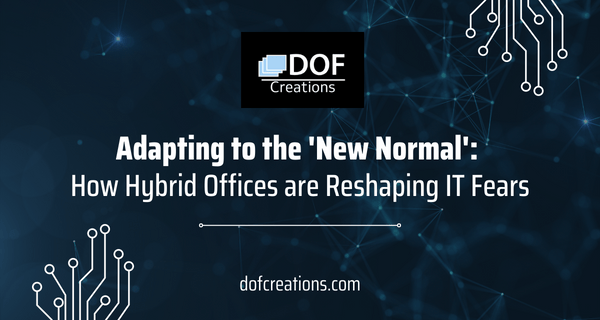The COVID-19 pandemic has irrevocably changed the world of work, ushering in a ‘new normal’ characterized by remote work and hybrid working models. Now, as we navigate the post-pandemic world, every enterprise technology leaders are asked to enable flexible working environments. We’ll explore the efforts and strategies of IT leaders to support this shift.
Role of IT in Enabling Flexible Working Environments
Strengthening Digital Infrastructure
To support hybrid work models, technology leaders are strengthening their digital infrastructures to handle increased demand. This involves improving network capabilities, expanding cloud storage, and adopting scalable software-as-a-service (SaaS) solutions that can be accessed from anywhere.
Bolstering Cybersecurity

With hybrid work models, employees are logging in from various networks, often personal ones, which increases vulnerability to cyber threats. IT leaders are implementing advanced security measures, including multi-factor authentication (MFA), secure VPN access, and robust endpoint security solutions to protect sensitive data and systems.
Promoting Digital Literacy
Ensuring employees are comfortable with digital tools is a key priority. IT departments are offering training and support to help employees navigate new tools, fostering a digitally literate workforce capable of maximizing the benefits of hybrid work.
Strategies for Optimizing Hybrid Work Models
Emphasizing Communication and Collaboration
In a hybrid work environment, maintaining open lines of communication is paramount. Technology leaders are harnessing collaboration tools like Microsoft Teams, Slack, and Zoom to facilitate communication across dispersed teams. These platforms enable real-time collaboration, video conferencing, and file sharing, ensuring teams remain cohesive and productive regardless of physical location.
Prioritizing Employee Well-being
In the ‘new normal’, the boundary between work and home can blur, leading to burnout. Recognizing this, IT leaders are leveraging technology to promote work-life balance. This might involve implementing digital wellness tools, scheduling software that respects personal time, or platforms that encourage social interaction among remote employees.
Leveraging Data Analytics
Data analytics can provide valuable insights into how employees work in a hybrid model, helping leaders optimize strategies. For instance, analytics can reveal peak productivity times, commonly used apps, and even bottlenecks in workflows. This data-driven approach allows for continual refinement of the hybrid work model.
Looking Ahead: The Future of Hybrid Work
As we move further into the post-pandemic world, the hybrid work model is likely here to stay. This requires enterprise technology leaders in SLED entities to remain agile and innovative, continuously adapting their strategies to meet evolving needs.
The focus is not only on ensuring operational continuity but also on creating a work environment that promotes productivity, collaboration, and well-being. By leveraging technology effectively, these leaders can ensure their organizations not only adapt to the ‘new normal’ but thrive in it.
As we navigate this new landscape, it’s clear that IT is not just a support function but a strategic partner enabling the transformation of work. The lessons learned during this transition will undoubtedly shape the future of work, redefining how we view productivity, collaboration, and the very concept of the workplace.



